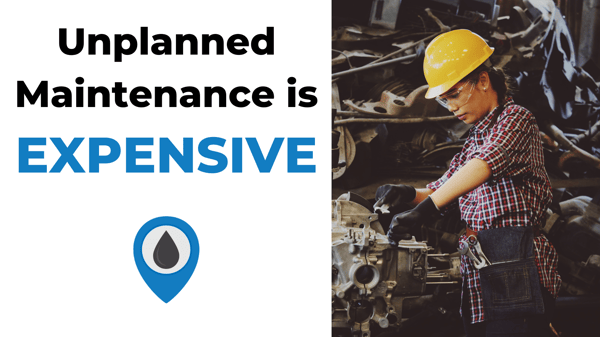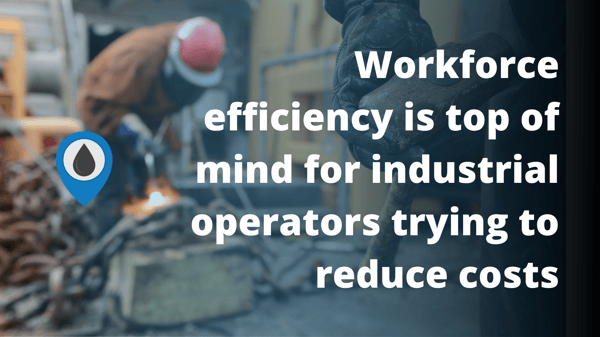
News, Insights, and more on Industrial IoT

In many industrial sectors, companies produce commodity goods with relatively thin margins. There is little room for unanticipated capital outlays or inefficient operations that drain precious cash flow.
Fortunately, with the right concentration and application of specialty chemicals, operators can preserve machinery, maintain production throughput, reallocate labor, and avoid downstream costs, all of which are factors that impact bottom-line profitability.
However, maintaining a reliable and accurate chemical management program is difficult without the right tools. Chemical managers must be able to assess the integrity of crucial infrastructure in real time, identify issues proactively, and update chemical injection systems according to their ever-evolving needs. Otherwise, they risk overspending on many fronts.
In this post, we address how industrial chemicals help industrial organizations keep operational costs down. We also discuss two strategies to curb unnecessary spending and validate any investments you make in this area.
Every industrial producer is chasing lower operating costs. Since many industries produce commodity goods with fixed global price points, oftentimes the only way to improve margin is by reducing costs. We’ve learned that many leaders overlook the impact that a finely tuned chemical management program can have on bottom-line profitability.
Equipment maintenance costs are a big line item for industrial asset managers. Keep in mind that maintenance costs include the labor and material expenses associated with conducting maintenance checks, as well as lost revenue from lack of production and safety incidents. Lubricants are a tried-and-true method for preventing expensive, unplanned maintenance.
Under-injecting lubricants increases the likelihood that critical assets fail prematurely. Over-injecting lubricants can lead to fouling, overheating, broken seals, and other issues.
Industry experts estimate that downtime costs factories at least 5% of productive capacity. Many facilities lose even more to unplanned maintenance, with some losing $10,000-$250,000 per hour in value.
 Unplanned equipment maintenance increases operating costs significantly.
Unplanned equipment maintenance increases operating costs significantly.
Generally, chemical treatment programs are labor-intensive, especially in remote applications. A well-designed chemical management program can improve production outcomes and free up capacity for higher-value work, like optimizing, improving, and automating processes.
On the downside, a mismanaged chemical treatment system forces workers to spend more time and energy on inventory checks, setpoint changes, reporting, and backend administration. Concerning declines in labor productivity have made this issue even more pressing for industrial manufacturers.

Inefficient labor management can increase chemical program costs.
Given that many industrial companies produce commodity products, they can’t afford to spend overspend on industrial chemicals. Over-injecting chemicals is salt in the wound for many industrial companies, as unnecessary expenditure can actually create a negative ROI for a product designed to reduce operating expenses.
WellAware baseline data has demonstrated that over 3/4s of chemical injection systems miss targets by over 25%. Roughly ⅓ of these are over-injecting, causing both waste and increased chemical costs.
So, what metrics and practices should operators follow to ensure they are investing responsibly in industrial chemicals.
At WellAware, we believe leaders should have two primary goals:
To accomplish these objectives, companies need to know how much they currently spend, as well as how much they will spend on chemicals in the future. There are two approaches to calculating these amounts:
Let's dive in further.

Industrial operators need to be able to measure past chemical spending and predict future costs
Industrial producers often struggle to prove the ROI of certain chemicals because they don’t have the capabilities to measure and project spending accurately. Many chemical managers mistakenly focus on the high-level “Chemicals” P&L line item rather than zoom in on specific chemicals.
To be successful, we need to understand how much we spend on different chemicals throughout the entire year and track their effectiveness at all times. For example, an oil & gas producer in the Permian Basin might want to record how much they spend on different corrosion inhibitors. Organizations in colder climates might want to think ahead about how much hydrate inhibitor they will need when temperatures drop below freezing. Those who struggle with scale precipitation should know which scale inhibitors mitigate the most build-up for the least amount of money.
Without this intel, we can’t make informed decisions about which chemicals to buy or evaluate whether they are worth the investment (spoiler: they are). If we can measure and project costs with a fine-toothed comb, we can begin to identify best practices that enhance both top-line and bottom-line performance.
Our chemical management platform, WellAware On Demand Chemical, simplifies the process of projecting chemical spend significantly. We provide an easy way for operations managers to import chemical pricing from their chemical vendors. All prices are timestamped so that finance teams can evaluate historical spending and draw conclusions about past chemical effectiveness.
WellAware On Demand Chemical also allows users to drill down and analyze spending by chemistry to make quarterly or annual projections based on current prices, expected future prices, and anticipated usage rates. Companies in geographic areas where temperatures change drastically can even adapt purchasing patterns to seasonal trends.
In summary, pay close attention to your chemical spending so that you identify opportunities to cut costs where appropriate and invest further where there is additional opportunity.
Watch this video to see how WellAware lets you easily
measure and predict chemical costs.
On top of using historical chemical spend to project future costs, we need to make sure that we only pay for what we use. Although this concept might sound simple, it can be challenging to implement.
It’s a well-known fact that invoices from chemical vendors are prone to error. Measuring custody transfer of chemicals is more complicated than many realize for several reasons.
First, plastic chemical tanks that hold specialty chemicals are manufactured with limited precision. We’ve seen capacities for “identical” tanks vary by as much as 10-20 percent! Second, few delivery trucks are equipped with the advanced metering capabilities needed to track delivery volumes accurately. Consequently, chemical users can easily overpay (or underpay) compared to their actual utilization. To avoid these problems, operators must be able to identify points of chemical custody transfer with timestamped occurrences and validate that volumes align with commitments.
Again, WellAware On Demand Chemical makes this process easy. Our solution automatically detects, quantifies, and timestamps deliveries into chemical tanks. Using current chemical pricing, we can provide accurate assessments of expected invoice quantities and reconcile documentation when something seems amiss. By doing this, we give operators the chance to address disparities with their vendors, which can ultimately reduce wasteful spending and help prove the ROI of certain chemicals.
Watch this video to see how automatic delivery detection and
invoice reporting can help you verify if your chemical invoices are accurate.
Today, WellAware On Demand Chemical supports over 2,000 chemical injection systems across the globe. We combine our data expertise with industrial know-how to help production teams maximize the effectiveness of their chemical management programs. Through automation, real-time monitoring, and constant data streams, operators have everything they need to design the ideal chemical injection systems for their organizations.
For more information, go to wellaware.us/chemical
Like what you're reading? Sign up for updates!
Have a Question?